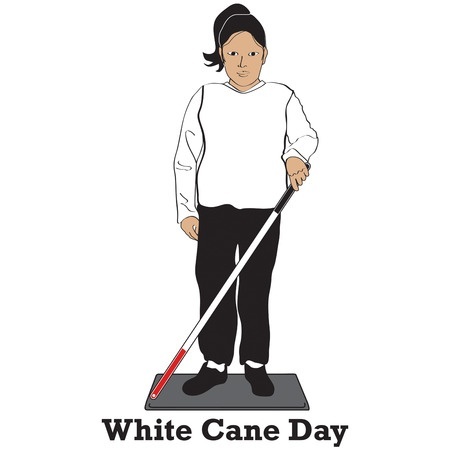Hopefully the title of this post caught your attention. As a person who is legally blind, I often wonder if the public even sees people with disabilities, specifically blindness. I say this because I have been on both sides of the sighted coin so to speak. I only lost most of my sight back in 2004 due to illness. When I started working on becoming independent and walking with my white cane, it became painfully obvious to me how ignorant the public is when it comes to blindness.
First of all, I will start with the basics. When you see a person with a white cane that means they are visually impaired. They may or may not have some sight. By all means never grab a person's white cane; it is the equivalent of grabbing our eyes. Next, unless asked, please do not just come and grab and drag. How would you like someone to come up and try to grab you? Please do not assume we need help, generally people with disabilities strive to be independent and many times we have our own ways of doing things. It is fine to offer help, but please do not be offended if we say no.
The main reason I am writing this article is how easy it would be for companies to make small changes that would help the visually impaired. If more companies would consider universal design which takes into consideration all people no matter if they have a disability or not.
When I started travelling on my own it was amazing to me how the world forgets the visually impaired and how easy it would be to include them. Things like audible pedestrian signals, or making the curb cutouts rough so the visually impaired can tell where the sidewalk ends and the street begins. One of the best things that have come is the electronic signature guide since that gives a small block for me to sign in. When I need to sign a paper I have no idea where I should sign, so please be aware that I may need help finding the line.
Granted the visually impaired population is small. But it is unfortunately growing and companies need to start to open their eyes and find ways to include this population. One idea is to have a visually impaired person help the company design their public spaces or at least give ideas what is helpful to a person who is visually impaired. Who better to help design than the people that are going to be using the facility? If you do not know a person who is visually impaired, call your local blind association or I am more than happy to help since that is what I do.
In conclusion, the visually impaired population is not asking for the world. We are just asking to be seen as equals. With a few easy modifications this can happen. Ours is not an invisible disability, you know that we are visually impaired because we have a white cane or a guide dog. Please know these two symbols and help us overcome the barriers that should be easy to break down. So I ask again, do you see me? Because more than likely I do not see you. When you do not notice my white cane or guide dog, how do I know where "over there" is? Please, America, open your eyes and see me.
